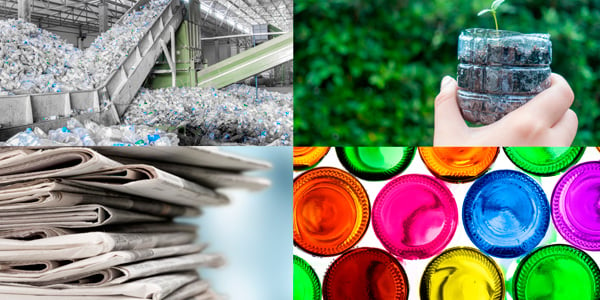When starting a sustainable design, packaging material choice is one of the main attributes to consider. It accounts for several important and different reasons. Not only for sustainable packaging design, but it is also significant for sustainability. Some of the key points needed to consider are cost, performance, aesthetics, decorating, and packaging material sustainability. Let's see a few questions to ask to determine swiftly if your packaging material choice is on the right path to a sustainable design.
- Is the material recycled currently in the region your product will get disposed of? Let's say your packaging material choice is glass. It is not wise to assume that it will automatically get recycled in every region. Or, if you choose polypropylene that is filled, it is recycled just because it is polypropylene.
- What are the other packaging materials you plan to use, and does this affect the recyclability?
- Do you plan to use any additives, and does this affect recyclability?
- Decoration expectations planned, and how does it affect your preferred material's design and recycling ability?
You need to make your list based on your company's goals, product portfolio, and what your clients are expecting from you.
Considering the four main groups of packaging materials available, namely, glass, plastic, biopolymers, and paper, let's see what resource we need to protect and replenish to promote sustainability. With glass, the main component is silica, and with paper, cellulose fiber is the main component. With plastic, the main ingredients are petroleum and natural gas. With biopolymers, plants, plant extracts, petroleum, and natural gas are the main components.

Considerations for Glass
- Consider the transportation since it takes a long distance from the origin of the factory to the buyer.
- Consider the factor of energy since glass takes an enormous amount of energy to convert.
- The aspect of fragility because of its high chance of breakability.
- Consider the extra number of resources needed to substitute the broken glasses.
- Ensure safety.
Considerations for Paper
- Ensuring the paper is sustainably sourced.
- The end use of the product and the features required.
- The expected life of a paper product versus another form.
- Decoration of the paper can get done with non-petroleum-based inks, such as soy.
Considerations for Bio-resins
- Considering where your product may get sold, and do they provide readily available solutions for depositing bio-based resins for recycle or industrial composting?
- Look at what stock material options are available and the number of actual pounds available in your area.
- Rest assured you understand what kind of bio-based polymer you are buying. Some grades are combined with petroleum-based materials as well.
- Is it biodegradable, bio-based, or compostable?
Considerations for Plastics
- Does your packaging material choice fall within one of the codes being PETE, HDPE, V, LDPE, PP, PS, or other? Many of them fall under number seven; it equates to landfills to the recycling industry, not the path of recycling the material.
Considerations for plastic PCR Suppliers
- What is their stream of recycling mainly derived from?
- Inspect the facility.
- Do they float sort, NIR, or IR scan?
- How many times do they wash the material?
- How do they handle the contaminated water?
- Do they pre-blend or post-blend the material?
- Do they test every lot?
- Do they run vented extruders?
- Do they run the materials through a screen pack?
- Do they use a 3rd party lab for verification?








